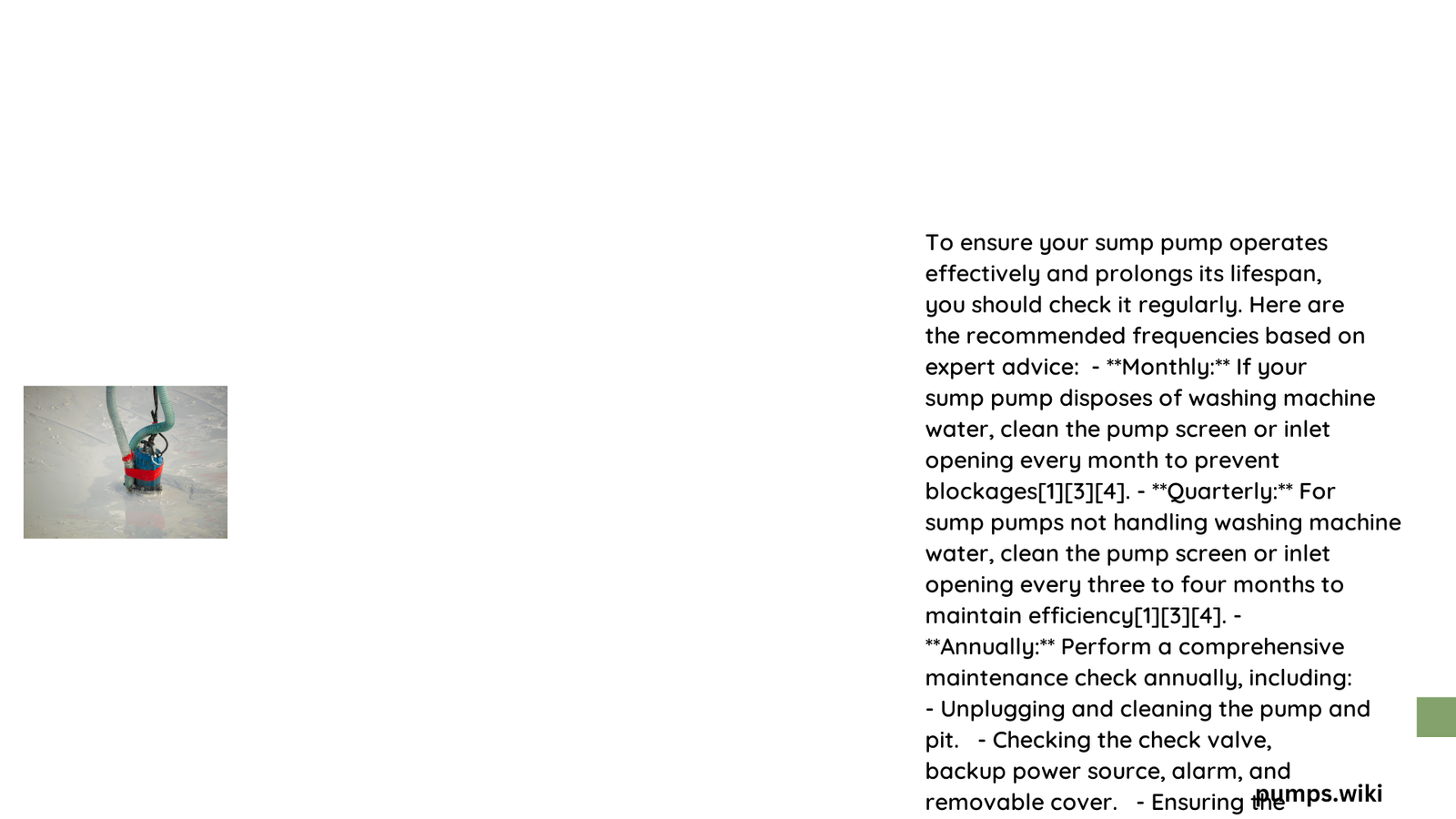Maintaining a sump pump is crucial for protecting your home from water damage. Homeowners must understand that regular inspection and maintenance can prevent catastrophic basement flooding. The frequency of checking a sump pump varies based on environmental conditions, pump type, and water table levels, typically ranging from monthly visual checks to comprehensive annual inspections that ensure optimal performance and longevity.
What Determines Sump Pump Maintenance Frequency?
Factors Influencing Inspection Schedule
| Frequency | Maintenance Level | Key Actions |
|---|---|---|
| Monthly | Basic Check | Visual inspection, debris removal |
| Quarterly | Intermediate | Float switch testing, power cord examination |
| Bi-Annual | Detailed | System flushing, comprehensive cleaning |
| Annual | Advanced | Complete pump removal, thorough examination |
Why Regular Sump Pump Checks Matter?
Regular sump pump maintenance prevents several critical issues:
- Water Damage Prevention: Stops potential basement flooding
- Cost Savings: Reduces expensive repair or replacement needs
- System Reliability: Ensures pump operates during critical moments
- Insurance Compliance: Maintains potential insurance coverage
How Frequently Should Different Pump Types Be Checked?

Submersible Pump Maintenance
Submersible pumps require more frequent attention due to constant water exposure:
- Monthly visual inspections
- Quarterly detailed checks
- Bi-annual comprehensive cleaning
- Annual professional evaluation
Pedestal Pump Maintenance
Pedestal pumps demand less intensive maintenance:
- Quarterly basic inspections
- Semi-annual detailed checks
- Annual thorough examination
What Specific Tasks Should Be Performed During Checks?
Monthly Inspection Checklist
- Clear sump pit debris
- Test pump functionality
- Verify power connection
- Listen for unusual sounds
- Check water drainage efficiency
Quarterly Maintenance Tasks
- Clean pump inlet screen
- Inspect power cord condition
- Verify float switch operation
- Check for visible wear or damage
- Test pump activation mechanism
Annual Professional Evaluation
- Complete pump removal
- Examine for rust or corrosion
- Lubricate bearings
- Inspect discharge pipe
- Comprehensive system testing
Warning Signs Requiring Immediate Attention
Red Flags During Sump Pump Checks
- Persistent water around pump base
- Unusual grinding or clicking noises
- Inconsistent float switch performance
- Visible rust or mechanical damage
- Reduced water drainage efficiency
Environmental Considerations
Impact of Location on Maintenance
- High Water Table Areas: More frequent checks recommended
- Heavy Rainfall Regions: Quarterly detailed inspections
- Dusty/Debris-Prone Environments: Monthly thorough cleaning
Professional vs. DIY Maintenance
When to Call an Expert
| Scenario | Recommended Action |
|---|---|
| Complex mechanical issues | Professional inspection |
| Persistent performance problems | Expert diagnostic evaluation |
| Age of pump over 7-10 years | Comprehensive professional assessment |
| Significant water table changes | Specialized consultation |
Cost-Benefit Analysis of Regular Maintenance
Regular sump pump checks represent a minimal investment compared to potential water damage expenses. A typical maintenance session costs between $100-$300, while basement flood repairs can range from $5,000-$50,000.
Conclusion
Consistent sump pump maintenance is not optional but essential for home protection. By following a structured inspection schedule tailored to your specific environment and pump type, you can ensure reliable water management and prevent costly water-related damages.
